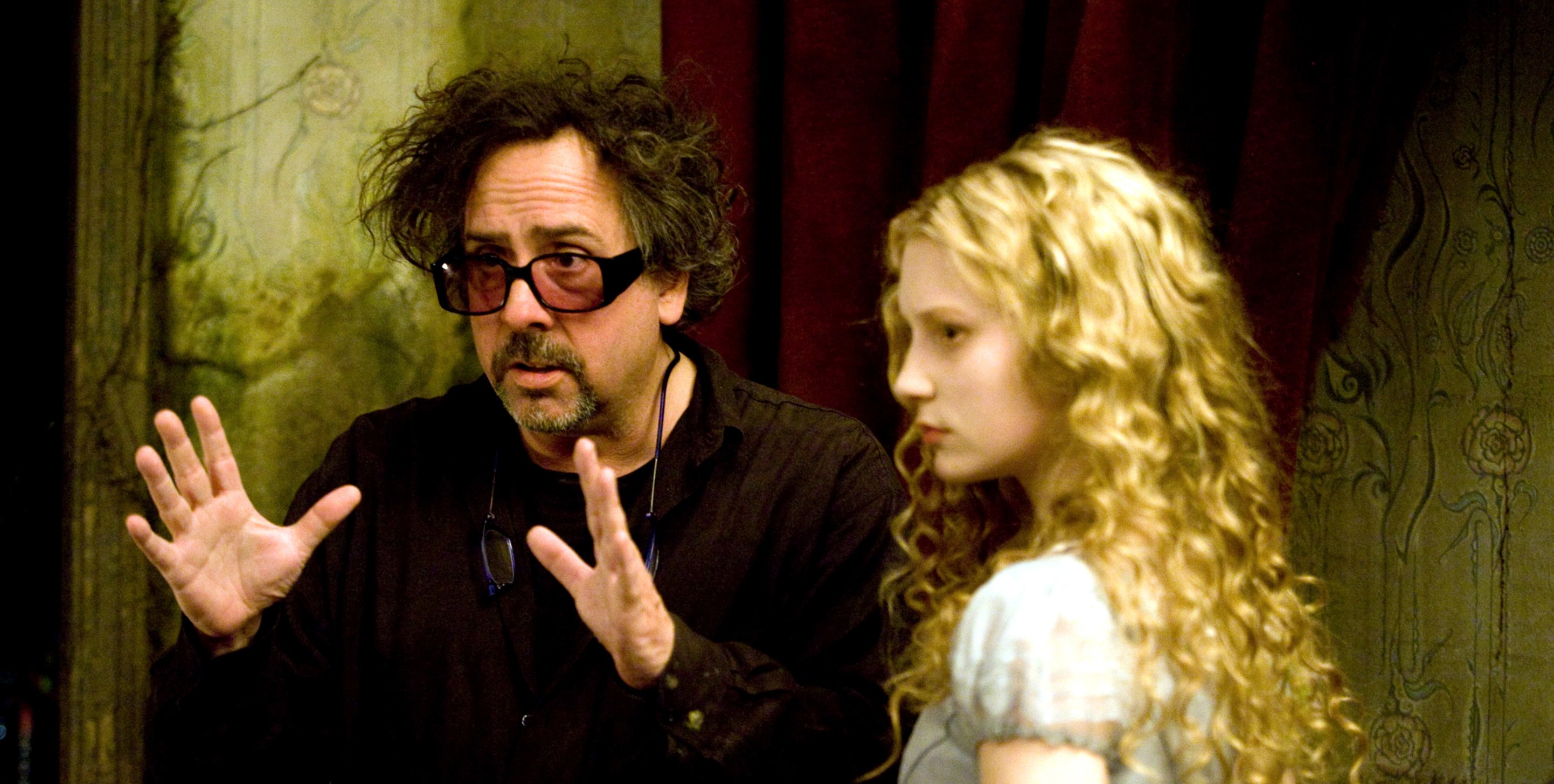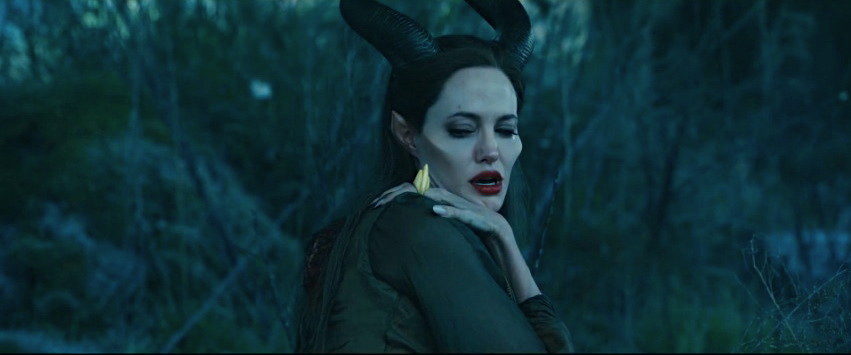

How did you first get involved with bringing Maleficent to the big screen?
Don Hahn: It started off as a project in animation in around 2003. I then pitched it to Tim Burton... actually I went over to Tim with three ideas to pitch. The first one was Frankenweenie, which had been an early [Disney] short film of his, and we talked about what a great movie it would make if he wanted to expand upon it in stop-motion animation film and he said, "Oh, that's great. Let's talk about it." Which of course we ended up doing Frankenweenie.
The second idea I pitched Tim was a The Nightmare Before Christmas sequel, and he said, "No, there's nothing else to talk about. What are we going to do, Nightmare Before Arbor Day?" And then the third idea I pitched him was Maleficent — I actually had a Marc Davis [the animator who designed Maleficent] drawing with me. I took the drawing and I said to him, "What about Walt Disney's Maleficent?" And he said, 'GIVE ME THAT!' and he pinned [it] up on his board and said, "OK, I'm in."
Tim was really excited about it and he actually helped develop it for a few months before his schedule got clogged up and a then number of things happened, and he had to go do Dark Shadows.

Speaking of Tim Burton, what was his version of the film going to be like? Was it going to be traditional animation or stop-motion animation?
DH: By the time we got to Tim the movie was going to be live action; we had already moved it out of animation. Tim had just finished Alice in Wonderland, so the movie probably would've been very stylized, but not in the same way Alice was since they're both a very different style of fantasy films, Maleficent being a little more earthbound."
Was Tim Burton's version of the film close to the final outcome?
DH: Oddly enough, yes. I mean, it did go through a million changes after Tim could no longer make the film. But the essence of it — digging into the origin of Maleficent, a character we know very little about — stayed very true throughout the whole project.
Also, during that brief Tim era we brought in Linda Woolverton [screenplay writer for Beauty and the Beast and The Lion King] who ended up writing the final script. And, of course, Linda and Tim had worked together on Alice in Wonderland, and I had worked with Linda on Beauty and the Beast, which was the first film I produced and it was her first screenplay — so we go way back. Linda's brilliant, and she stuck with the project and so did I, then Sean Bailey, who is president of Walt Disney Studios, brought in Angelina Jolie, and it just took off from there. Angelina and Linda are both incredibly smart and fearless in terms of storytelling and fearless in terms of making changes to the story in order to make it more relevant to audiences.

What did Angelina Jolie bring to the character of Maleficent that audiences might not be aware of?
DH: I think it's important to point out that Angelina is not just an actress, she is also a filmmaker, and because of that you are getting a wide range of contributions. In the original fairy tale, Maleficent is pretty black-and-white; she's evil, she wasn't invited to the christening, so she puts a curse on everybody and leaves. And I think what's interesting about Angelina, and certainly what Linda brought to the script, was these shades of gray. That you have this evil character that the audiences didn't quite understand and then you reveal through the story why she is evil, why she got her wings clipped, then how she softens and shows she has a heart inside.
One of Angelina's major contributions was her ability to give a very restrained performance; she could have been very broad and cartoony, because there's lots of live-action retellings of animated movies where the lead actor is just zany. So it easily could've become that, but it's because she holds back, she allows you to say, "Wow what an interesting, ethereal, dark character. Why does she [Maleficent] act that way?" And then we see why as she slowly opens up, peels back layers of the onion to see what's inside. So then you start to see hints of warmth with baby Aurora, or when she lifts little Aurora (who was played by her daughter Vivian) in her arms and plays with her. So you see moments of connection, but she doesn't just overly show you that, she's very restrained — which is the brilliance of Angelina as an actress. And, yes, then of course she gave input from the costume design, to the horns, to the facial applications — those Lady Gaga cheeks. You're getting a tremendous contribution from an actress, who is far more than an actress.
Do you know if Angelina was a fan of the character before getting involved with the film?
DH: She was! When she was a kid, she grew up with Disney — like all of us. But a dark interesting, glamorous character like Maleficent was something that really appealed to her. And if she was ever going to play a Disney character in a film, that was the character she would want to play.

There has been a lot of talk about the scene where Maleficent got her wings clipped as a metaphor for rape. Was that intentional?
DH: Audiences (and everyone) will draw their own conclusions about that scene, and I suppose that's what, in a large sense, fairy tales are: You read into it what you need to read into it. For us, getting your wings clipped is a very ancient idea going back to the story of Icarus, so when you get your wings clipped you lose your freedom, you don't have your voice really — like the scene in The Little Mermaid, where they literally take her voice so she can become human, this was that same scene. The moment where she lost her freedom, by having her wings clipped, by a man she had a romantic interest in.
So I completely understand why people read into it; that's not a bad thing. For us as storytellers it was a scene where she suffers the ultimate insult in every way, by taking away the freedom for Maleficent to live her life the way it was meant to be.
In the same vein, were you surprised by people calling this a male-bashing film?
DH: (laughs) No, I wasn't. But I found it [the movie] fresh because we have a legacy of hundreds of years of stories of princesses who are worthless until their princes show up. And this originally was one of them. In the original fairy tale she is not only worthless, but has to fall asleep for a hundred years until the right guy comes along and says, "OK, you can have a life now because your man is here." And that type of story is, I guess, great for 1959, but for audiences and society now it's an antiquated and inappropriate story to tell. So it's not any more male-bashing than many other movies, but I feel we weren't looking to take a harsh look at men, but instead to a closer look at where love comes from. And love can exist between this fairy godmother and Aurora, as can it be sustained between prince and princess, that love comes in many different forms and it can even break the curse between these two characters. That was a far more interesting story than just having a prince kiss and awaken her; it was something fresh and a topic that hadn't been explored before.
So does it male bash? I'll leave that to audiences to decide whether it does or not. Does the film have strong female characters? Yes, and thank God! Thank God. Being able to have actresses like Elle Fanning and Angie, to tell a story that is essentially about love, and peeling back layers of our individual woundedness, and being vulnerable to each other, what a great story that is. And in part, I feel that is why the movie has been such a success.
Speaking of success, one of the big things today is to build theme park attractions based on blockbuster movies. Is that something that is in the works?
DH: I honestly don't know, but being the Walt Disney Company, of course we'll have plans. It's part of the business to want to capitalize on successes. The cool thing about the character of Maleficent is that it's already at the center of the Walt Disney Company because it's part of the Sleeping Beauty story, and literally in the center of Disneyland as part of Sleeping Beauty Castle. So I am sure at some point there might be an attraction connected to this movie, but that wouldn't be unusual since the Sleeping Beauty story has already been connected to Disney for so long.
Lastly, are there any plans to bring other Disney villains to the big screen?
DH: No, but I was asked that recently and I thought, How cool would it be to do, like, an Ursula movie? It would be amazing. Villains are always the favorite characters, and they have such rich, cool personalities. I mean, there must be so much to those characters for them to be the way the are. Gaston, Scar, Ursula, and all the other villains are messed up characters, and they're probably more like us than we would like to think, because they're complex characters. We're neither good nor evil; we're full of contrasts and contradictions. That's why the villains are so interesting, 'cause they're full of contradictions too.
So no, we haven't talked about it really, but we probably should.

